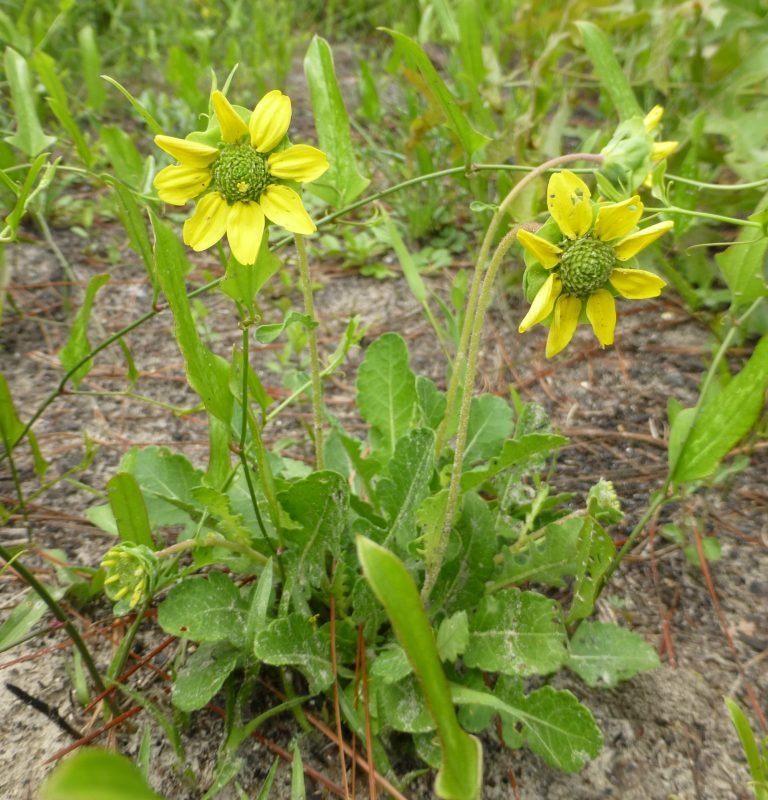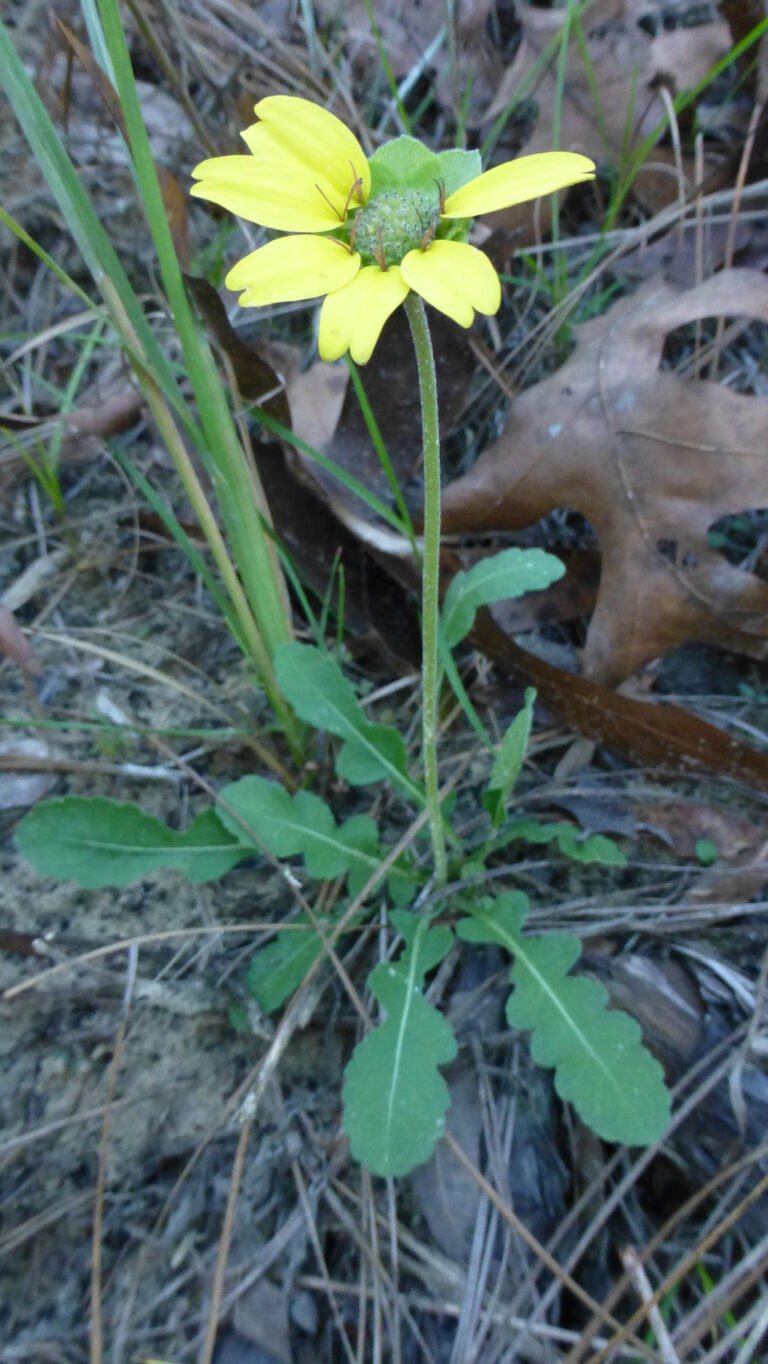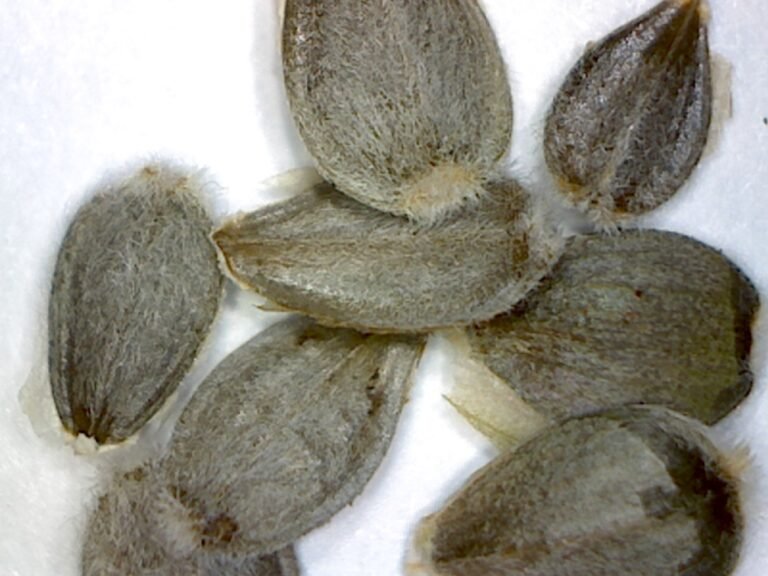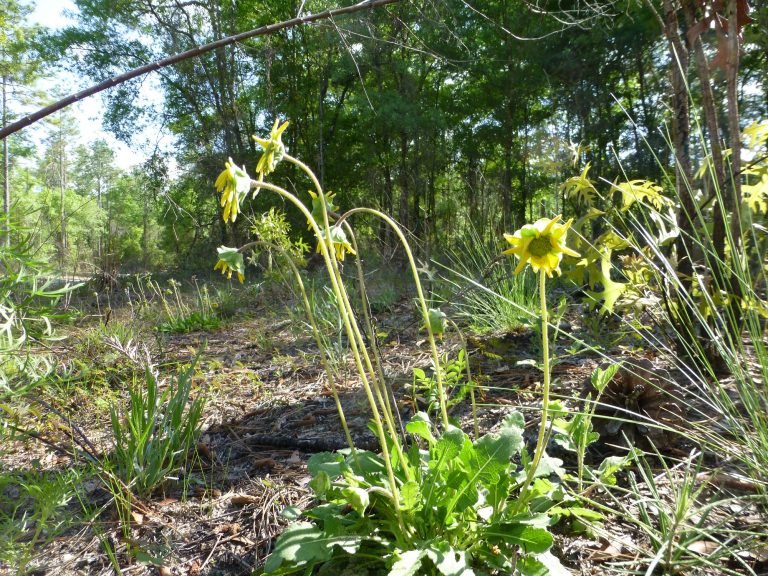Berlandiera subacaulis
(Florida Greeneyes)

Common Name, Latin Name, and Family
Common names include Florida greeneyes and common greeneyes.
Its Latin name is Berlandiera subacaulis.
It is found in the Asteraceae, or aster, family.
Form
A perennial, endemic, wildflower that grows to a height of about one foot.
Leaves
Chiefly in a basal rosette of elliptic to oblanceolate leaves with lobed margins.
The sparse leaves that may appear on the stems are alternate.
Flowers
Yellow flowers with green centers that appear all year.

Fruit / Seeds
The seeds are small and gray and resemble tiny sunflower seeds. They are encapsulated in a paper covering that should be removed before storing or planting because it may cause the seed to mold in storage and rot in the soil.

Habitat
Pinelands, sandhills, dry open woods, and disturbed sites.
Native Range
Florida greeneyes is only naturally occurring in Florida which means it is endemic to Florida.
Landscape Use
In the home landscape it grows in full sun to part shade with average to dry soils.

Wildlife Use
The lovely little yellow flowers are used as a nectar source by pollinators such as bees, butterflies, flies, and wasps.
The seeds are eaten by birds and small mammals.
Propagation
It can be grown from seed or transplanted.
Seeds need to be cold stratified for 2-3 months before germination.
Transplants work best when using the smallest plants possible. Remove any flowers or seeds so the plant can focus on recovering from the shock of transplanting.
